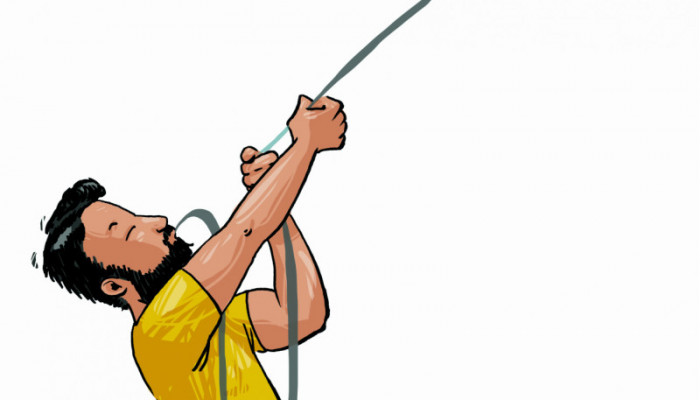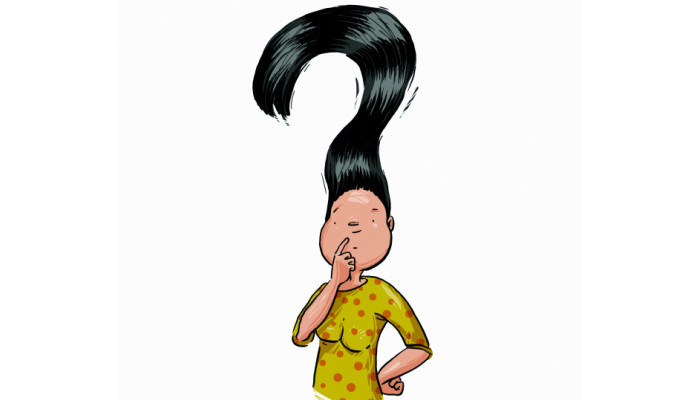'The language border can only be changed if a majority can be found for this, both among the Dutch-speaking and the French-speaking MPs.'
10 questions - 8. Why does the Rand continue to be Flemish, even when it's inhabited by a majority of foreign speakers?
8. Why do the municipalities in the Vlaamse Rand around Brussels continue to be Flemish, even when they are inhabited by a majority of foreign speakers?
The municipalities in the Rand around Brussels belong to the Dutch language area. Due to the fact that a lot of French speakers have recently moved to these municipalities in the Rand, more and more inhabitants speak French there. In the municipalities with facilities the French-speaking inhabitants are even in the majority. However, officially, these municipalities in the Rand continue to be exclusively Dutch-speaking. The reason for this is that, like in some other federal countries, the principle of territoriality applies in Belgium.
INTERNATIONALISATION IN THE VLAAMSE RAND
A significant number of 420,000 inhabitants in the 19 municipalities in the Vlaamse Rand around Brussels are foreign speakers. Their exact number is unknown. In recent decades, the six municipalities with facilities experienced a great deal of Frenchification and internationalisation as well. Yet these municipalities continue to belong to the Dutch language area, and, apart from their exception status, Dutch is still the official language there. To many foreigners this situation is hard to comprehend. However, it is the result of a balanced set of agreements between the language communities in Belgium.
PRINCIPLE OF TERRITORIALITY
With the subdivision of our country into language areas, the principle of territoriality was also introduced. This means that the language of the area is also the language of administration, education and courts. In practice, the Dutch language must be used in these fields everywhere in Flanders, even when in some municipalities the majority of the inhabitants speak another language. In fact, this same rule applies to the French and German language areas. Over the years, French and Dutch speakers have shaped the principle of territoriality together. Moreover, it is laid down in the Constitution and can therefore not easily be modified. Besides, there is no political majority for this.
THE RESULT OF AN HISTORICAL EVOLUTION
The language border cannot be adjusted just like that. This requires a special majority in the federal parliament. This means that the proposal for amendment must be backed up with a two-thirds majority in the House of Representatives and the Senate and that in each language group a majority of MPs must back the law. Consequently, the language border can only be changed if a majority can be found for this, both among the Dutch-speaking and the French-speaking MPs. Dutch speakers and French speakers can never modify the language border unilaterally. The fact that some Flemish municipalities are home to a lot of French and foreign speakers does not change anything. Since the Flemish politicians in particular are unwilling to discuss any modifications to the language border, there is little chance that this situation will change in the near future.
NOT JUST IN BELGIUM
Belgium is not the only country whose federal model is built around the principle of territoriality. It is also applied in other multilingual countries, such as Switzerland. The underlying rationale there is the same as in Belgium. A living language is inextricably linked to a territory and to the people living in that territory.
THE LANGUAGE BORDER: A RICH HISTORY
Belgium is, and has always been, a complex country. On a map this is illustrated by the language border which really cuts Belgium in two. The language border delineates two language areas: the Dutch and the French. Throughout the years the language border has been officially defined and it has become a federated state border within Belgium. However, the language border existed long before that and it is much older than Belgium itself.
The exact age of the language border is unknown. It is generally accepted that the language border arose around the fourth century. For centuries, this border hardly had any significance at all. In the Middle Ages, Latin was the prevailing language. Afterwards, more and more people started to use French. Around the 18th century, French was the language spoken by the social and political elite almost everywhere in Europe. When Belgium was annexed by the French Republic in 1795, the administration, courts, army, media and education were called on to Frenchify Flanders. This Frenchification continued even when Belgium was annexed to the Verenigd Koninkrijk der Nederlanden (United Kingdom of the Netherlands) in 1815. The Dutch authorities tried to turn the tide, but their efforts failed when Belgium seceded in 1830 and became independent.
The young state of Belgium guaranteed language freedom and also entered this principle in the Constitution. However, the reality turned out differently. The then rulers chose French as the language of administration. French became the language of the political, social and economic elite. The Dutch language was hardly taught, had little cultural prestige and was not a standard language. As a result, the centuries-old language border turned more and more into a social border as well: the French-speaking upper class versus a mainly Dutch-speaking lower class.
The opposition in Flanders to this distorted situation only gradually got into its stride. Consequently, the fight for emancipation and the linguistic conflict lasted a long time. Overall, it would take more than a century before the demographic prevalence in Flanders could also be translated into political influence. A first important step was the Equality Act in 1898, which recognised Dutch as an official language and placed it on the same footing as French. Still, the practical consequences remained limited. Wallonia continued to be monolingually French, while Flanders remained bilingual. Moreover, French continued to be the language of the social elite in Flanders and Brussels. University studies could not be attended in Dutch anywhere in Flanders. In the first decades of the 20th century the Flemish battle concentrated on the Dutchification of the state university in Ghent. This battle was won in 1930, but it was 1968 before the age-old Flemish university of Leuven became monolingually Dutch.
In 1921, Belgium was subdivided into two monolingual areas (Flanders and Wallonia) and the bilingual area of Brussels. From then on, the language of the area also had to be the language of administration. Although the country’s political elite recognised that Flanders had a fully-fledged language and culture, the French-speaking bourgeoisie retained a lot of safeguards in Flanders too.
In 1932 the principle of territoriality was introduced. From then onwards, the rule of the ‘language of the area being the language of administration’ also applied in Flanders. Nevertheless, transitional measures were still in place for French speakers. In addition, the language border had still not been fixed. Every ten years it could be adjusted on the basis of the results of the language censuses. These adjustments were practically always made to the disadvantage of Dutch speakers.
Finally, the language border in Belgium was laid down by law on 8 November 1962. This was done with a democratic majority of Dutch and French speakers. One year later, the language legislation for administrative affairs was thoroughly reformed. The language border was now linked to the concept of language area. At that time Belgium was also subdivided into the four language areas: the Dutch language area, the French language area, the German language area and the bilingual Brussels-Capital area. Each Belgian municipality is unmistakably part of one – and only one – of these four language areas.
In 1970 the language areas were also embedded in the Constitution. Again, this was done with a majority of Dutch and French speakers. At the same time it was agreed to what extent these language borders and language areas could still be changed in the future. The idea was mainly to prevent the language border from being adjusted every other day, which would make it impossible for the different language communities to coexist in Belgium. Another objective was to avoid one single language community having the power to redraw the language border all by itself.


